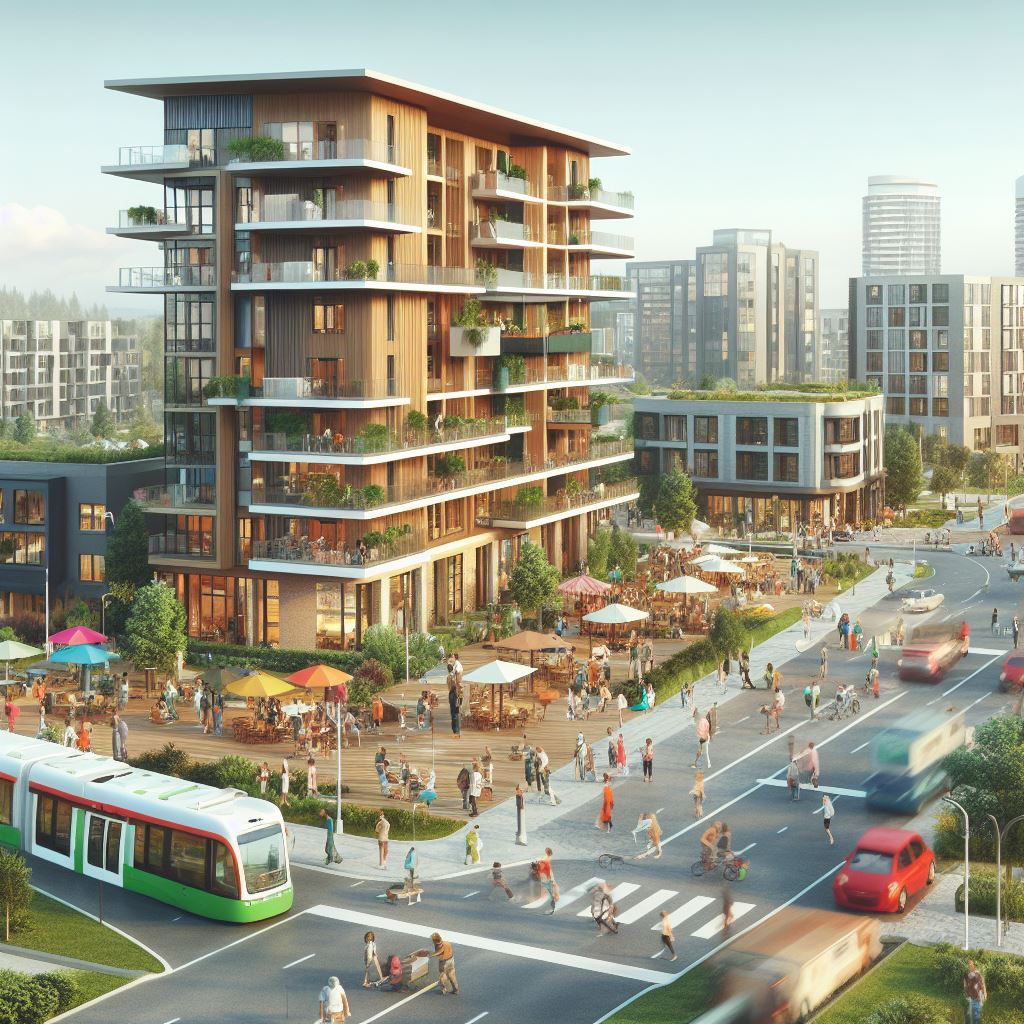Understanding Neighborhood Analysis for Apartment Selection

Looking for the perfect apartment? Before you sign that lease, it’s crucial to understand the power of neighborhood analysis.
With so many factors to consider, from amenities to safety, taking the time to research and evaluate the neighborhood can make all the difference in your living experience.
In this article, we’ll guide you through the process of conducting an effective neighborhood analysis, helping you find the ideal place to call home.
Let’s dive in!
Key Takeaways
- Neighborhood analysis is important for making informed decisions about lifestyle and preferences, particularly when selecting an apartment.
- Safety is a crucial factor to consider when conducting neighborhood analysis, including low crime rates, well-lit streets, security measures, and a strong community presence.
- Proximity to amenities and services such as grocery stores, pharmacies, hospitals, and schools should be evaluated during neighborhood analysis.
- Researching neighborhood safety and security measures, such as crime rates, security systems, and neighborhood watch programs, is essential for a comprehensive understanding of the area.
Importance of Neighborhood Analysis
When considering apartment selection, it’s essential for you to understand the importance of neighborhood analysis. By conducting a thorough examination of the neighborhood, you can make an informed decision about whether it aligns with your lifestyle and preferences. Neighborhood analysis provides valuable insights into the safety, amenities, and overall quality of life that you can expect in a particular area.
One of the primary reasons why neighborhood analysis is crucial is safety. By researching crime rates, you can gauge the level of security in a neighborhood. This information allows you to assess whether the area is suitable for you or your family. Additionally, understanding the proximity of emergency services, such as hospitals and police stations, can give you peace of mind and ensure that help is readily available when needed.
Moreover, neighborhood analysis helps determine the availability of amenities that are important to you. Whether it’s proximity to schools, grocery stores, parks, or entertainment venues, knowing what’s nearby can greatly impact your daily life. Access to public transportation and the quality of roads can also affect your commute and convenience.
Factors to Consider in Neighborhood Evaluation
Consider these key factors when evaluating a neighborhood for apartment selection.
- Safety: Ensure that the neighborhood has a low crime rate and features well-lit streets, security measures, and a strong community presence.
- Proximity to amenities and services: Check for nearby grocery stores, pharmacies, hospitals, and schools. Being close to these facilities can make your life more convenient.
- Transportation options: Determine if there are public transportation options, such as buses or trains, and major highways or roads nearby. Access to transportation is crucial for commuting to work or getting around the city.
- Ambiance and vibe: Consider the overall atmosphere of the neighborhood. Do you prefer a quiet and peaceful neighborhood or a vibrant and lively one? Take your lifestyle and preferences into account when evaluating this factor.
These key factors will help you make an informed decision about the neighborhood that best suits your needs and preferences.
Now, let’s move on to researching neighborhood amenities and services.
Researching Neighborhood Amenities and Services
To research neighborhood amenities and services for apartment selection, start by exploring nearby facilities and conveniences. This step is crucial in ensuring that the neighborhood meets your specific needs and preferences. Begin by identifying the essential amenities such as grocery stores, pharmacies, and healthcare facilities. Access to these services is vital for your day-to-day convenience and well-being. Additionally, consider recreational facilities like parks, gyms, and entertainment venues. These amenities contribute to a higher quality of life and provide opportunities for relaxation and socializing.
Next, delve into the transportation options available in the neighborhood. Evaluate the accessibility and frequency of public transportation, as well as the proximity to major roads and highways. Access to reliable and convenient transportation is essential for commuting to work, school, or other destinations.
Furthermore, research the availability of educational institutions in the area. Consider the proximity and reputation of schools and universities, especially if you have children or are planning to pursue further education yourself.
Lastly, investigate the safety and security measures in the neighborhood. Look into crime rates, the presence of security systems, and the responsiveness of local law enforcement.
Understanding Neighborhood Safety and Security
For ensuring your safety and security in the neighborhood, assess the crime rates and the effectiveness of local security measures. It’s crucial to thoroughly research and analyze the neighborhood’s safety and security before selecting an apartment. Here are three key factors to consider:
- Crime rates: Look into the crime statistics of the neighborhood to understand the level of safety it offers. Check the local police department’s website or online databases for information on reported crimes. Pay attention to the types of crimes that occur most frequently and whether there’s been an increase or decrease in crime rates over time.
- Security measures: Evaluate the effectiveness of the security measures in place within the neighborhood. Are there security guards or surveillance cameras in public areas? Are there secured entry systems for apartment buildings? Knowing the security measures can give you an idea of how safe you’ll feel walking around the neighborhood and within your apartment complex.
- Neighborhood watch programs: Find out if there’s an active neighborhood watch program in the area. These community-based initiatives are aimed at preventing crime and improving safety. They can provide an additional layer of security by fostering a sense of unity among residents and encouraging vigilance.
Tips for Conducting Effective Neighborhood Analysis
To conduct an effective neighborhood analysis for apartment selection, prioritize gathering relevant information from reliable sources. This will ensure that you have accurate and up-to-date data to make an informed decision.
Start by researching the crime rates in the neighborhood. Look for statistics on both property and violent crimes to get a comprehensive understanding of the safety level.
Next, consider the proximity of essential amenities such as grocery stores, schools, parks, and public transportation. Access to these facilities can greatly enhance the quality of living in a neighborhood.
Additionally, evaluate the availability of healthcare facilities and emergency services in the area. It’s crucial to have easy access to medical care in case of emergencies.
Another important factor to consider is the neighborhood’s demographics. Look for information about the age groups, income levels, and ethnic diversity in the area. This will help you determine if the neighborhood aligns with your preferences and lifestyle.
Lastly, don’t forget to visit the neighborhood in person. Walk around, observe the general atmosphere, and talk to residents if possible. This will give you a firsthand experience and help you gauge if the neighborhood is a good fit for you.
Frequently Asked Questions
What Are Some Common Mistakes to Avoid When Conducting a Neighborhood Analysis for Apartment Selection?
When conducting a neighborhood analysis for apartment selection, avoid common mistakes like relying solely on online research, neglecting to visit the area in person, and failing to consider the amenities and safety of the neighborhood.
How Can One Assess the Quality of Schools in a Particular Neighborhood?
To assess the quality of schools in a neighborhood, you can start by researching their academic performance, graduation rates, and any awards or recognition they have received. You can also consider visiting the schools and talking to parents and students for firsthand experiences.
Are There Any Online Resources or Tools Available to Help With Neighborhood Analysis?
Yes, there are online resources and tools to assist with neighborhood analysis. These tools provide data on crime rates, school ratings, amenities, and demographic information to help you make an informed decision about apartment selection.
What Are Some Indicators of a Neighborhood’s Economic Stability and Growth Potential?
Indicators of a neighborhood’s economic stability and growth potential include median household income, employment rates, and property values. These factors can give you insight into the overall health and future prospects of a neighborhood.
How Can One Evaluate the Transportation Options and Accessibility of a Neighborhood?
To evaluate transportation options and accessibility in a neighborhood, start by researching public transportation routes and schedules. Check for bike lanes and sidewalks. Consider proximity to major highways. Assess the availability of parking and the walkability of the area.



